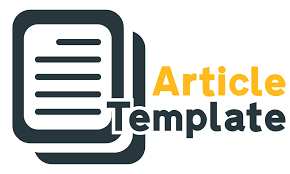Profil Kemampuan HOTS Siswa SMP Plus Ma’arif NU Ciamis pada Pelajaran Biologi
Sari
Teks Lengkap:
Halaman 150 - 160 (Download PDF)Referensi
Afifah, M. N., Septiarini, F. N., & Afifah, F. H. (2019). Analisis higher order thinking skills siswa SMP ditinjau dari perbedaan gender. EDU-MAT: Jurnal Pendidikan Matematika, 7(2).
Afriana, J., Permanasari, A., & Fitriani, A. (2016). Project based learning integrated to stem to enhance elementary school’s students scientific literacy. Jurnal Pendidikan IPA Indonesia, 5(2), 261-267.
Anderson, & Krathwhol, D. R. (2002). A Revision of Bloom`s Taxonomy: An Overview.
Ariyana, Yoku., Ari, Pudjiastuti., dkk. 2018. Buku Pegangan Pembelajaran Berorientasi pada Keterampilan Berpikir Tingkat Tinggi. Jakarta: Kementrian Pendidikan dan Kebudayaan.
Baharin, N., Kamarudin, N., & Manaf, U. K. A. (2018). Integrating STEM education approach in enhancing higher order thinking skills. International Journal of Academic Research in Business and Social Sciences, 8(7), 810-821.
Dolasinski, M. J., & Reynolds, J. (2020). Microlearning: a new learning model. Journal of Hospitality & Tourism Research, 44(3), 551-561.
Handayani, A. O. (2021). Proses Berpikir Reflektif Siswa SMP/MTs Dalam Menyelesaikan Soal HOTS Berdasarkan Jenis Kelamin (Doctoral dissertation, UIN Ar-Raniry Banda Aceh).
Hikmawati, H., Suastra, I. W., Suma, K., Sudiatmika, A. I. A. R., & Rohani, R. (2021). The Effect of Problem-Based Learning Integrated Local Wisdom on Student HOTS and Scientific Attitude. Jurnal Penelitian Pendidikan IPA, 7(SpecialIssue), 233-239.
Jailani, J., Sugiman, S., & Apino, E. (2017). Implementing the problem-based learning in order to improve the students’ HOTS and characters. Jurnal Riset Pendidikan Matematika, 4(2), 247-259.
Kusmana, D. A. K., Dewanti, R., & Sulistyaningrum, S. D. (2023). An English Reading Material Analysis Through Microlearning and Critical Thinking Skill Views. ELT-Lectura, 10(1), 42-50.
Liu, D., & Zhang, H. (2022). Improving students’ higher order thinking skills and achievement using WeChat based flipped classroom in higher education. Education and Information Technologies, 27(5), 7281-7302.
Maryanti, C., Kusumaningsih, W., & Endahwuri, D. (2023). Profil Berfikir Kreatif Siswa dalam Menyelesaikan Soal HOTs Ditinjau dari Adversity Quotient Berdasarkan Gender. Imajiner: Jurnal Matematika dan Pendidikan Matematika, 5(3), 194-199.Mei, Y, Yunos J, Othman
W, Hassan R, Tze T. 2012. https://The Needs Analysis of learning higher order thinking skills. Procedia – Social and Behavioral Sciences 59: 197-203
Rahayu, R., & FX, E. W. L. (2015). Pengembangan perangkat pembelajaran ipa berbasis problem based learning di smp. Jurnal Kependidikan: Penelitian Inovasi Pembelajaran, 45(1).29-43.
Rahayuningsih, S., & Jayanti, R. (2019). Grup, HOTS dan Gender. Uwais Inspirasi Indonesia.
Sulistyaningrum, S. D., Putri, R. N., & Herawati, A. (2023). Analysing Critical Thinking and Microlearning Based English Speaking Learning Materials for Students with Mild Intellectual Disabilities. Journal of English Language Studies, 8(1), 118-135.
Uchia, S. T., & Yunianta, T. N. H. (2021). Kemampuan Siswa SMA dalam Menganalisis Soal Matematika Berbasis HOTS Berdasarkan Gender. Jurnal Cendekia: Jurnal Pendidikan Matematika, 5(2), 1488-1497.
Refbacks
- Saat ini tidak ada refbacks.








